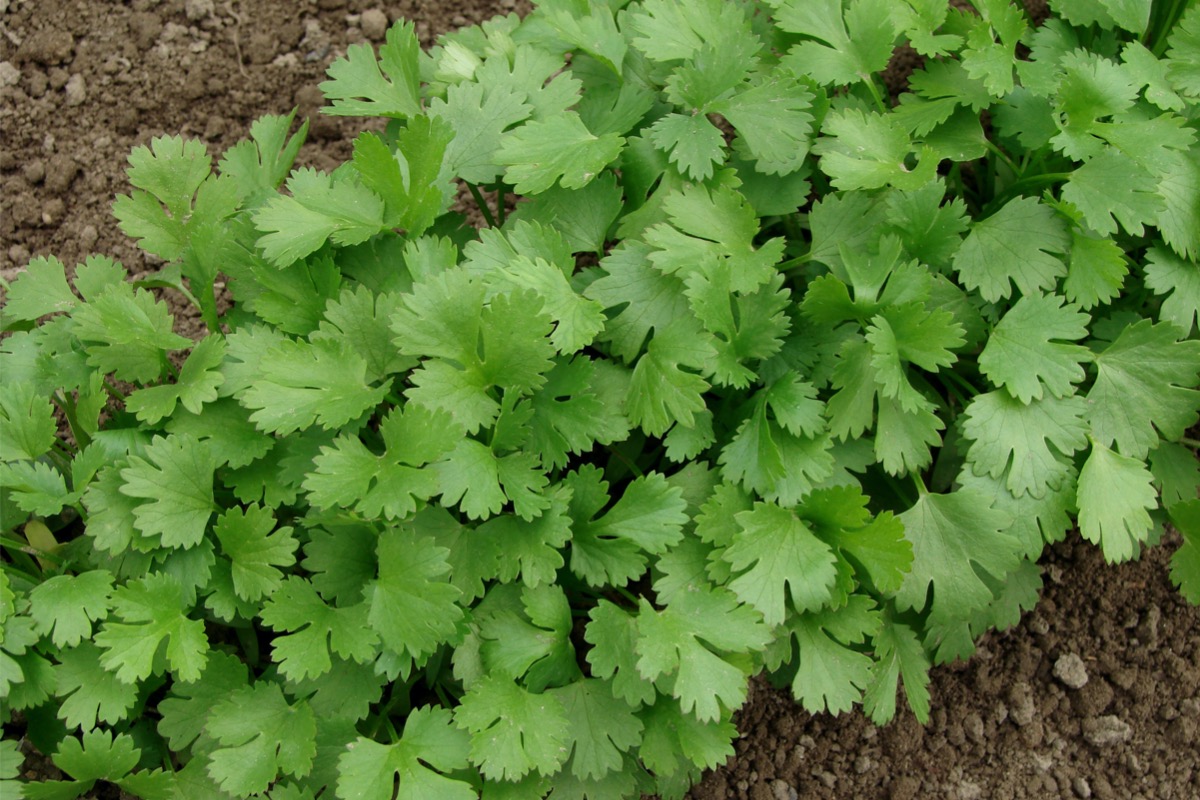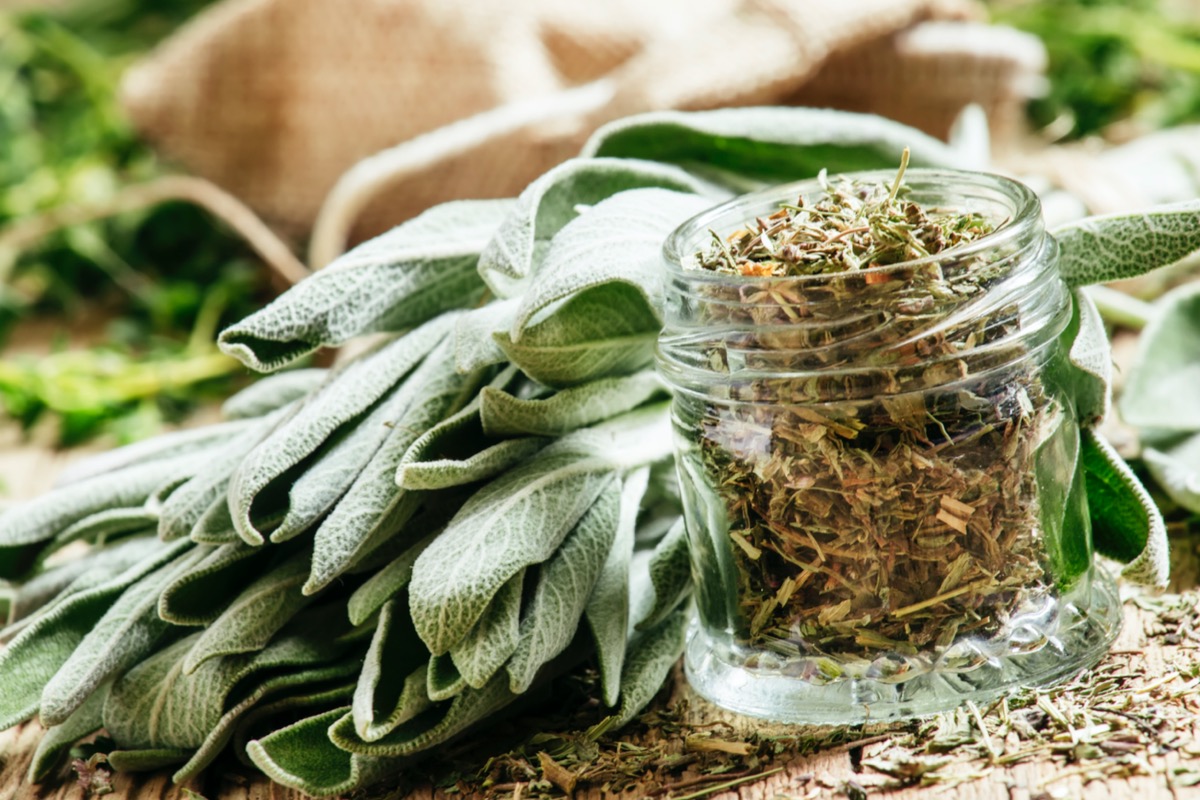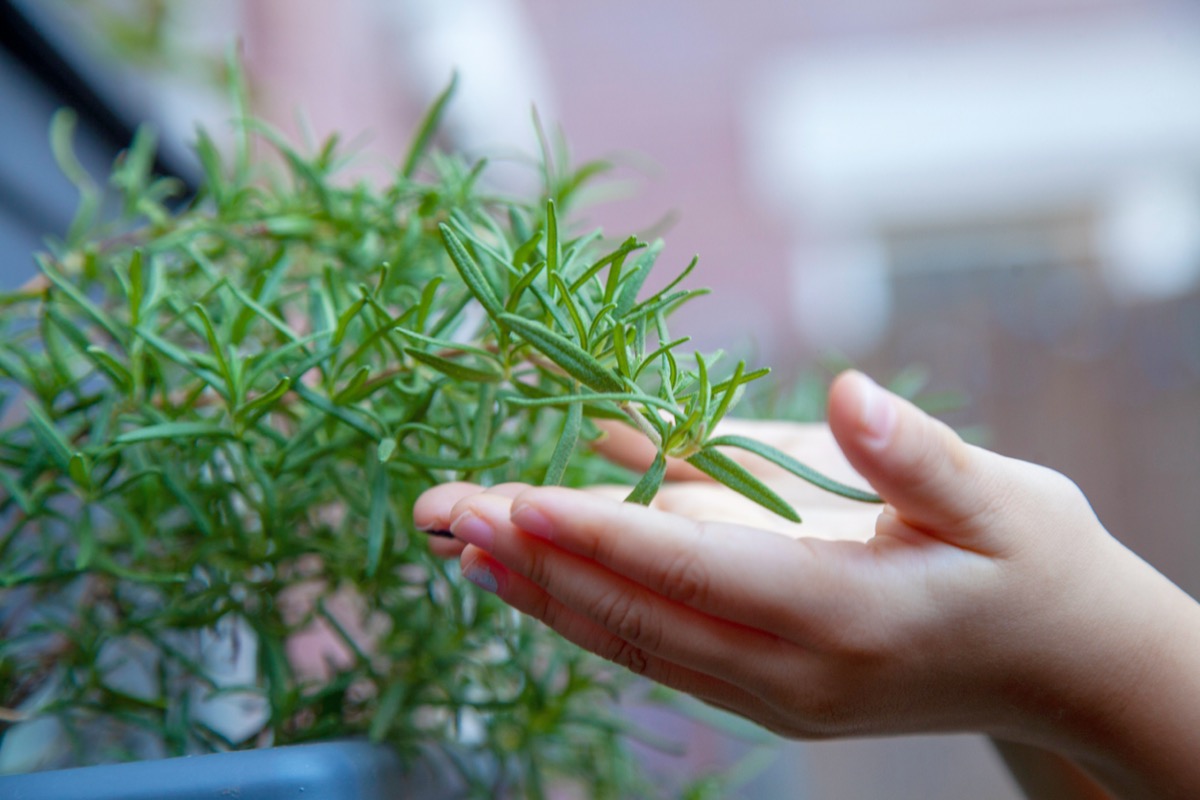We may earn revenue from the products available on this page and participate in affiliate programs. Learn More ›
Growing herbs outdoors is much easier than growing them indoors since the outdoors is their natural milieu. Outdoor herb-growing is also rewarding, as it provides the garden with greenery and your kitchen with natural, home-grown flavor.
As for what herbs can be planted together, any that require similar conditions usually do well in proximity to one another. However, fennel shouldn’t be placed near any other herb but dill, since fennel can inhibit the growth of neighboring plants. Mint and parsley reportedly don’t like each other either, and word has it that you should keep basil away from rue—and both basil and rue away from sage—if you want to preserve harmony in your herb family.
Read on to learn seven other important things you should know about growing herbs outdoors.
RELATED: 12 Perennial Vegetables to Plant for Years of Fresh Produce
1. Herbs can be annual, biennial, or perennial.
When considering which herbs to grow in your herb garden, keep in mind that their lifespans vary. Annual plants complete their entire life cycle, from sprouting to flowering and making their own seed, in one growing season before succumbing to frost. Annual herbs include basil, borage, cilantro, dill, and German chamomile.
Biennials have 2 years to live, generally producing only rosettes of foliage during their first growing season. They flower and seed during their second summer before expiring. Since they tend to self-sow freely, however, they often can seem perennial. Biennial herbs include angelica, caraway, chervil, parsley, and Florence fennel.
Perennials are plants that continue year after year if conditions are right for them, though some live longer than others. For example, Mediterranean types like lavender, rosemary, and tarragon may not last long in wet climates, but they might thrive in dry ones. Other perennial herbs to grow include chives, lemon balm, oregano, thyme, and Roman chamomile.

2. Where your herbs grow matters.
Your herb garden ideas should take into account that most of these plants need at least 6 hours of sun per day—more if they can get it. Some Mediterranean types prefer all-day rays along with sandy and very well-draining soil, while parsleys and mints usually thrive with partial shade and wetter ground. However, you’ll probably want to confine extremely vigorous herbs, such as mints, in containers to keep them from running rampant in your garden.
If your climate is extremely soggy, it’s a good idea to place Mediterranean types in an herb garden planter, herb box, or herb spiral rather than in the ground to provide them with better drainage. Soil pH should be between 6 and 7.5, but avoid planting herbs in extremely fertile soil. Although it can cause them to grow quite large, it also will weaken their flavor and scent.
3. Outdoor herbs may require more frequent watering than those grown indoors.
If your climate receives at least 1 inch of rainfall per week, you probably won’t need to water herbs growing in the ground. Otherwise, watering once a week and making sure that the moisture penetrates to a depth of 6 inches is generally preferable to lighter daily waterings.
However, plants encased in containers, such as outdoor herb garden planters, could require watering as often as once per day during hot, dry weather. Just make sure those containers have drainage holes to prevent sogginess, which can cause root rot in Mediterranean types, though mints tolerate excess moisture better than other herbs do.

4. Organic fertilizers and natural pest-control methods are essential.
When considering how to grow herbs, keep in mind that overly fertile soil can be bad for them, since it dilutes their flavor. If you feel the need to feed your plants, just add a little compost to their soil. (You might want to make an exception for basil, dill, and parsley, since those herbs reportedly grow best when fertilized every 3 weeks or so.)
Because you will eat your herbs eventually, avoid spraying them with toxic pesticides. Fortunately, herbs don’t usually suffer much from pests and are, in fact, often used in vegetable gardens to repel insects from other plants. If you see any aphids, spider mites, or other problem insects, try spraying them off with a strong stream of water before you revert to other organic options like insecticidal soap.
RELATED: Edible Flowers: 15 Beautiful Blooms That Are Also Delicious
5. Strategic pruning can increase yields.
Pinch back gangly herbs like basil once they grow approximately 4 inches tall. That will help them branch out into bushiness rather than grow tall and spindly. Simply remove the tip of each shoot with your fingers or pruning shears.
You also can harvest herbs for cooking as you need them throughout the growing season, cutting softer varieties back by as much as a half and woody types—such as rosemary—by one-third. Just be careful that you never prune woody herbs back into the bare wood at the bases of their stems, since eliminating all of their foliage could kill them.

6. Bolting can alter the flavor of some herbs.
You’ll probably want to harvest or pinch your herbs often enough to prevent them from flowering, since they tend to deteriorate in flavor after they “bolt,” which means “go to seed.” In fact, most sources recommend harvesting herbs to be dried just before they flower, when their flavor should be at its most intense.
Of course, this doesn’t apply to herbs like lavender and chamomile, whose flowers rather than leaves are harvested. The same goes for herbs from which gardeners gather seeds, such as caraway and the coriander seed from cilantro. You will want to let those bloom as much as possible!
7. Most herbs can be dried and used throughout the year.
Another major benefit of growing herbs outdoors is the chance to dry and preserve them for use after their season ends. Gather herbs you wish to preserve in mid-morning, once they no longer are damp with dew but before intense daytime heat. You can hang them to dry or spread them for a week or two atop screens in an airy room protected from sun and rain. Alternatively, you can use a dehydrator or an oven heated by a pilot light, and some herbs can be desiccated faster in the microwave.
Once your herbs are completely dry, strip the foliage from the stems and discard the stems. You then can store the dried herbs in tightly capped containers in a cool and dim place, such as on a pantry shelf. If you would prefer to avoid the drying process, you can also make herbal oils for cleaning or flavored vinegars from your fresh plants instead.
RELATED: The 12-Inch Farm: 12 Foods You Can Easily Grow in Containers


